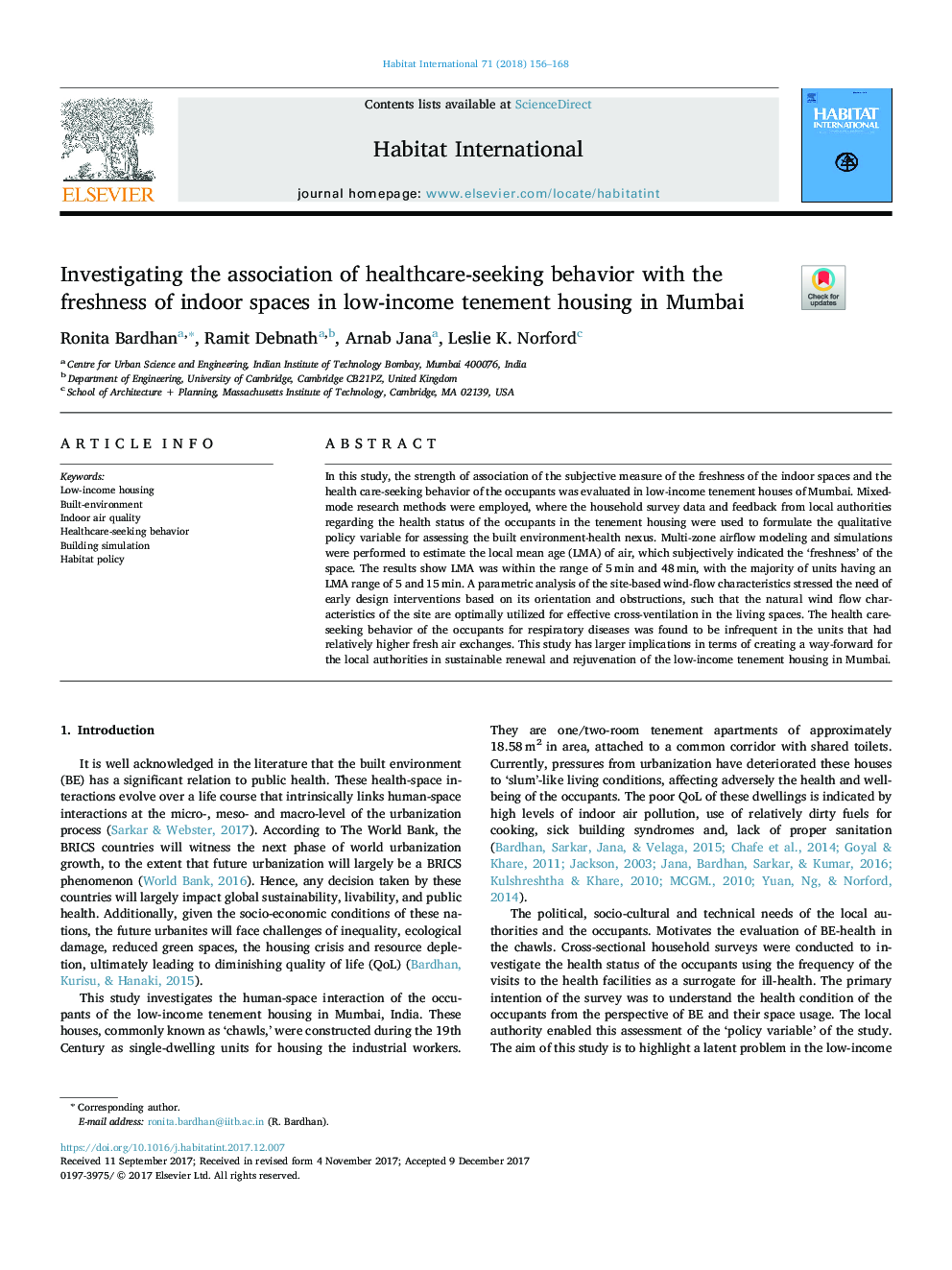| Article ID | Journal | Published Year | Pages | File Type |
|---|---|---|---|---|
| 7455324 | Habitat International | 2018 | 13 Pages |
Abstract
In this study, the strength of association of the subjective measure of the freshness of the indoor spaces and the health care-seeking behavior of the occupants was evaluated in low-income tenement houses of Mumbai. Mixed-mode research methods were employed, where the household survey data and feedback from local authorities regarding the health status of the occupants in the tenement housing were used to formulate the qualitative policy variable for assessing the built environment-health nexus. Multi-zone airflow modeling and simulations were performed to estimate the local mean age (LMA) of air, which subjectively indicated the 'freshness' of the space. The results show LMA was within the range of 5â¯min and 48â¯min, with the majority of units having an LMA range of 5 and 15â¯min. A parametric analysis of the site-based wind-flow characteristics stressed the need of early design interventions based on its orientation and obstructions, such that the natural wind flow characteristics of the site are optimally utilized for effective cross-ventilation in the living spaces. The health care-seeking behavior of the occupants for respiratory diseases was found to be infrequent in the units that had relatively higher fresh air exchanges. This study has larger implications in terms of creating a way-forward for the local authorities in sustainable renewal and rejuvenation of the low-income tenement housing in Mumbai.
Keywords
Related Topics
Social Sciences and Humanities
Social Sciences
Development
Authors
Ronita Bardhan, Ramit Debnath, Arnab Jana, Leslie K. Norford,
